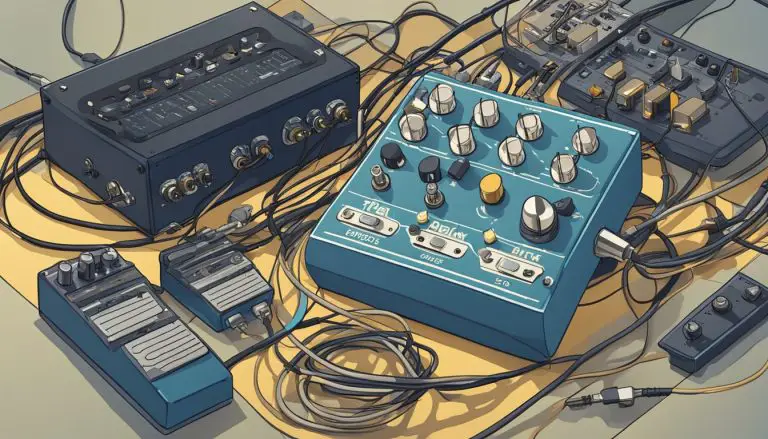how-to-relic-a-guitar
How do you make your new guitar look artfully ancient?
Not everyone wants a gleaming new guitar nowadays. Some people want their instrument to look like it has been used for centuries. To achieve that antique look, you just need to relic your guitar.
Guitar relicing is the art of making a new instrument look like it has been playing for ages. Achieving the perfect look and feel of an old guitar requires skill and time. For this article, the purpose is to show how you can effectively do it.
Step #1 – Prepare Your Guitar
To begin with, you need to prepare your instrument for relicing by doing the following:
- Take off the strings
You should remove the strings before you start changing the instrument’s look. Unwind them if they are relatively new. However, if they are aged and the string slack has been taken off already, just snap them off using wire cutters. You don’t need old strings when relicing your guitar.
Credit: youtube.com
- Take off the metal parts
Use a screwdriver to remove your instrument’s metal parts. You don’t have to relic the guitar’s metal components, but doing so will complement its overall look. If your instrument has a pickguard, you should play it safe when taking it off, especially if it’s attached to the guitar’s input jack.
- Master the components
You should be well organized when removing parts from your instrument. It is not advisable to pile all parts together. Instead, arrange them as follows:
- Components from the neck in one pile
- The bridge components should be piled together
- The pickguard and other metal parts in another pile
- Keep the screws with their respective components
It is a good idea to take pictures as you remove the parts. In this way, it will be easy to remember where each component belongs.
Step #2 – Relic the Metal Components
When it comes to relicing the metal components of the guitar, there are several ways to it, which include the following:
- Creating scratches on the components manually
You can scrape some pieces of your instrument using a metal file. Remember, not every component can be filed. For instance, you should avoid scratching the pickups, lest you damage them. Likewise, don’t apply so much force that the scratches end up looking obvious.
- Exposing the components to the elements of nature
Consider leaving some of the metal parts outside for a day or two. This may result in rusting, which is a common feature in old instruments. However, you should not leave any electrical parts, such as the pickup, outside.
- Using Chemicals
Several household chemicals are useful in creating an aged look on metals. One such chemical is a bathroom cleaner. The cleaner should have either ammonia or bleach, but not both. Simply dip the metal components into a container filled with a mixture of water and bathroom cleaner (In the ratio of 3:1).
Leave the components to soak in the solution for around three hours before checking their condition. Consider repeating the process as many times up to the time you get the perfect look.
Step #3 – Relic the Body
The guitar’s body can also be made into a relic in some ways as explained below:
- Natural relicing
To avoid ending up with an obviously amateur relic, it is imperative that you understand the essential areas of your guitar that naturally age before you age them manually.
Natural relicing is all about aging your guitar by playing it on a daily basis for a couple of years. The perspiration stains from your hands, how you hold the guitar, as well as how you store and transport it all play an integral role in the natural aging process.
- Scrub the body with a coarse material
Take a scratchy material, like steel wool or sandpaper, and use it as an abrasive. You will have to get rid of the thin layer of nitrocellulose or polyurethane lacquer to allow for the chipping of the paint.
Likewise, you can transform your gleaming finish into a matte finish. Simply scratch the body using sandpaper. Apply your sandpaper in a circular motion, but avoid applying a lot of pressure – the lacquer layer is so thin that it doesn’t need so much effort to eliminate.
- Subject the guitar’s body to various temperatures
If you stay in a region with very high or low temperatures, you can naturally make paint chips by leaving the body outside. Alternatively, you can put your guitar into a freezer or expose it to direct sunlight.
Don’t forget to get rid of the protective lacquer before you subject the instrument to those temperatures.
- Make Use of Chemicals
If you want a crackled look, consider using chewing gum remover spray or dust-off spray. These sprays are composed of a chemical that makes them cold. You should apply a uniform, thin layer to the guitar’s body and neck.
When spraying the neck, remember to cover up the fretboard. However, if it has a protective layer on it, you can leave it exposed.
- Chip the Body’s Paint
You can also give the main body an aged look by creating cracks in the body’s paint job. Look for areas that are already cracked in the instrument’s paint. Then, take a flat-head screwdriver and use it to chip away the paint. You should only highlight the cracks that already exist on the instrument’s surface.
- Scrape the Pickguard
Many electric guitars come with a plastic pickguard, which is quite easy to relic. Simply scratch its surface using a sharp object. However, avoid overdoing it, else it will appear evident.
We hope you enjoyed reading this and you have learned how to give your new guitar an artfully aged look effectively. When relicing your guitar, you need to be very careful to ensure that you get it right.



